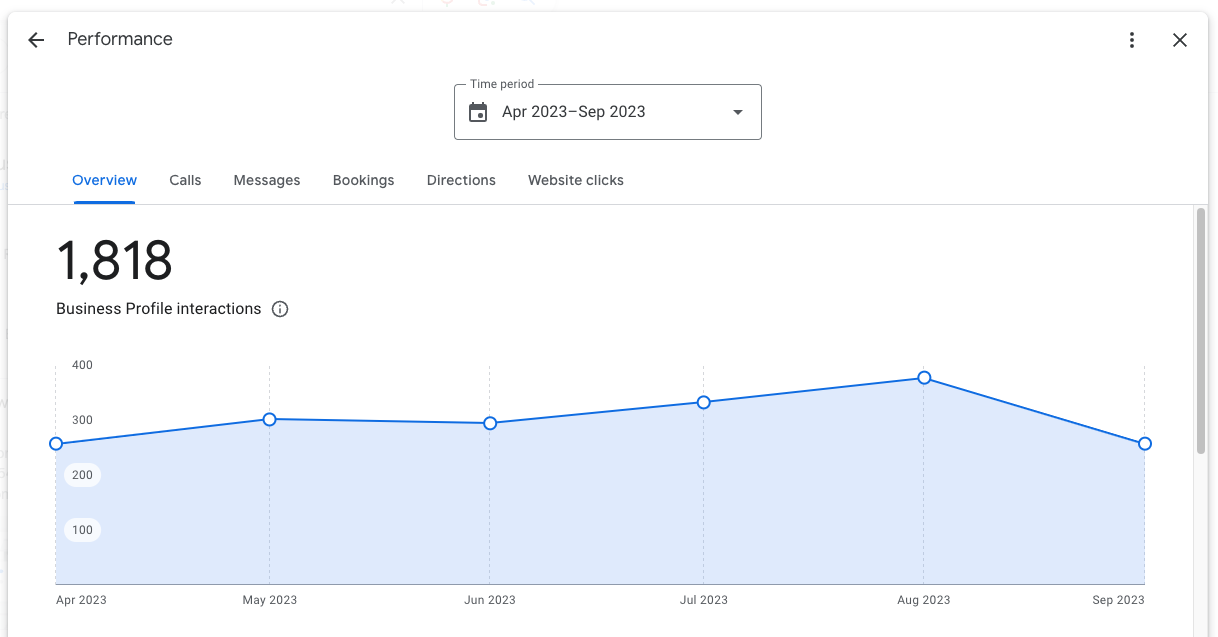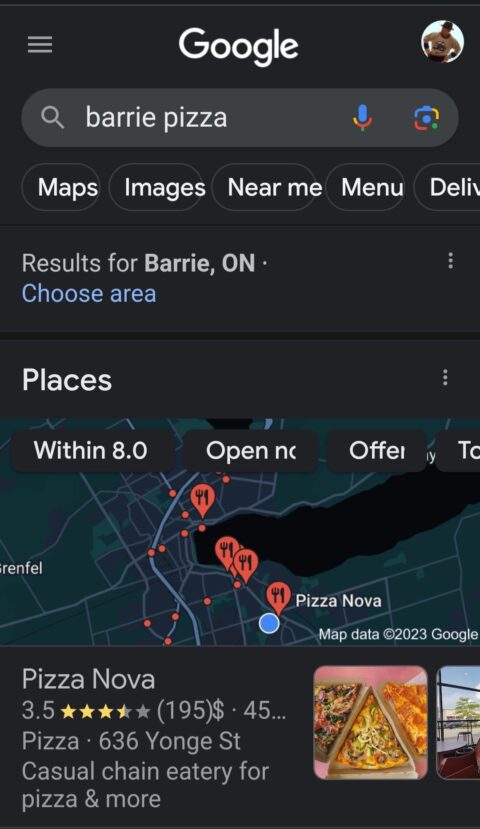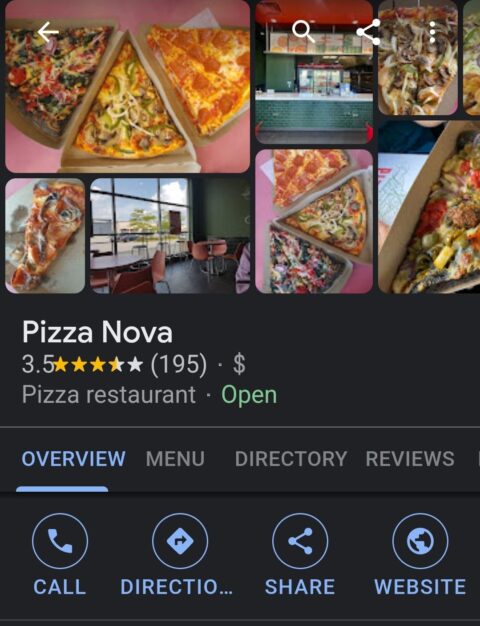If you’ve been involved in any sort of marketing over the past 20 to 30 years, you’ve no doubt heard the phrase “Content is King.”
This may very well be true, as content in its many forms underpins all interactions between businesses and their target audience.
However, if “Content is King,” then data is an omnipotent force directing the King’s every move.
This is particularly the case with digital marketing, where nearly all interactions and engagements can be monitored, analyzed, and optimized.
To put it simply, data helps us to understand what is working and not working so we can focus our attention on doing more of the former and less of the latter to drive results.
Start With Actionable KPIs
For small local businesses, which don’t typically have a great deal of time or resources to allot to their digital marketing efforts, there are some basic data points or key performance indicators (KPIs) we can track and review with our marketing partners if we employ third-party support, to ensure we are maximizing those efforts.
As with any strategy, it’s important to properly identify and establish meaningful goals against which progress can be measured.
KPIs such as visibility scores, click-through rates (CTRs), or website traffic, engagement, and goal conversion rates broken down by channel can and should be monitored.
Monitoring should be conducted over relevant comparative time periods – for example, month-over-month or year-over-year – to reveal trends or patterns we can learn from and take action upon.
Organic Search Visibility
With admitted bias, we will first look at the data related to our local organic search visibility or local SEO.
Here, we want to understand how well our content (website, Google Business Profile (GBP), or other points of our web presence) shows up in organic search results for keywords we want to be found for.
We could spend a fair bit of time reviewing how to arrive at such a list of keywords, so we will assume for now that keyword research has already been done.
We can either conduct Google searches (preferably Incognito to remove any personalization of results), or we can leverage rank tracking tools, which can provide us with granular or more broad visibility data.
When it comes to local organic search visibility data, the goal should be to understand where we have established some level of authority upon which we can build and sustain momentum.
Another invaluable and typically underutilized tool set to gauge and understand organic visibility, performance, and potential underlying causes, for better or worse, is Google Search Console (GSC).
GSC is broken down into five sections with useful data for website owners related to:
- Performance – Keyword queries, average positions (to be taken with a grain of salt), impressions, CTRs, and top-performing pages/content.
- Indexing – Which website pages are/are not being discovered, crawled, and included in Google index.
- Experience – Detailed metrics related to overall experience, Core Web Vitals, and mobile usability.
- Shopping – Specific to ecommerce websites and manageable via Google Merchant Center.
- Enhancements – Validation of website components like breadcrumbs, logos or videos.
Of these, local business owners or their authorized agents should review and take action, as needed, on insights and recommendations provided in the top three sections.
Note: As a tool primarily designed for webmasters, there are often “issues” and alerts which should be reviewed by someone with technical knowledge in order to prioritize and address them.
Google Business Profile Performance
A successful Google Business Profile, for many local businesses, is as important (if not more) than their website.
After all, the Local Map Pack has superseded organic search results for many local search queries – particularly those conducted on a mobile device.
 Screenshot from search for [Pizza Barrie], Google, September 2023
Screenshot from search for [Pizza Barrie], Google, September 2023
Further, many of the primary actions businesses want their customers to take (i.e. call, message, book, ask for directions, visit website, leave a review) can be accomplished via a GBP.
Local businesses that maintain a complete, accurate, and active GBP, alongside a solid website experience, will be rewarded by Google with increased visibility across the board.
 Screenshot of Google Business Profile, September 2023
Screenshot of Google Business Profile, September 2023
In terms of data, GBP provides a wealth of information related to visibility on mobile and desktop search over time, the keywords being searched, and the ongoing metrics related to the primary actions noted above.
 Screenshot of Google Business Profile Performance Reporting, September 2023
Screenshot of Google Business Profile Performance Reporting, September 2023This data should be reviewed on at least a monthly basis to identify whether or not the GBP is being found and engaged with.
If not, steps should be taken to more frequently post content (e.g. promotions, links to website or blog content, photos) to gain more glowing Google reviews and to respond to the same in a timely manner as customers and Google expect.
Paid Search And Social Engagement
Local businesses that need to augment their organic visibility with paid search and/or social ads, depending on who and where they believe their audience to be, naturally want to pay attention to how well their campaigns and budget are performing.
In short, are their ad dollars being well spent and/or delivering a return?
All search and social ads providers offer a wealth of performance data related to visibility, clicks, conversions, and spend, which can, in turn, be broken down by demographic, location, time, or other variables.
In fact, the growth of paid digital ads can, in large part, be attributed to the granularity of the actionable data available for campaign optimization.
Paid search ads and keyword focus should also be viewed relative to organic visibility.
In other words, we need to understand what keywords/topics we have visibility and/or are able to drive traffic and conversion for so we don’t have to pay for them.
Keeping in mind, SEO and establishing authority always takes time.
Organic Social Media Visibility And Engagement
Social media, in its many forms, is an important channel for some local businesses that have taken the time to build and nurture a social following. Social media is, after all, at its core, about community.
All social media platforms recognize the need for businesses to be able to measure the value of these channels and, as such, provide analytics to understand what are often described as soft and hard engagement metrics.
The difference between the two is the essential degree of effort and commitment required by the consumer.
Low-value soft (sometimes called vanity) metrics include follows and likes, while hard metrics are shares and clicks, where consumers are making the extra effort to endorse the content they have read, listened to, or viewed.
Tracking and reviewing these metrics, particularly the hard metrics, can provide excellent signals as to the type, topic, and channel preferences of an audience, thereby guiding future content creation, distribution, and optimization.
Website Analytics
Every local business owner should have access to some form of website analytics, with a vast majority recognizing and opting for Google Analytics as the de facto source of truth for understanding site audience composition and behavior.
Website analytics help us to understand and validate who our audience is (demographically), where they came from, what they consumed on our site, how engaged they were, and whether or not they took any of our calls to action (CTAs).
Similar to other data sources where local business owners are concerned, the key to using Google Analytics or any other platform effectively is to focus on the metrics and KPIs that matter most – i.e. conversions, traffic by channel, top entry pages, and engagement trends.
Create or ask for dashboards and reports that provide insights, answers, and next steps at a glance. Underlying data will always be available to drill down into if needed, and time allows for deeper analysis.
Competitive Data Insights
When it comes to competitors and gaining competitive insights, we are effectively taking many of the same focused data points noted above and seeing if we can reverse engineer the things our competitors appear to be doing to get ahead.
- What keywords do they appear to be optimizing their website for or buying search/social ads for?
- What content do they have that appears in search results, or they are sharing via their GBP?
- What social platforms are they active on, and what content appears to work best for them?
However, it is important to first make sure we know who our competitors are, specifically online and/or in specific channels.
For example, a quick Google search or review of local SERP data for our focus keywords will reveal who our primary organic search competitors are for those keywords.
At a local level, this may include national and big box players, but should, more importantly, define who our top-performing local small business competitors are.
We should also be cognizant of the fact these are likewise local small businesses, who have similar challenges and certainly not all the answers, but we should take notes where they are outperforming us.
The Future With AI
We’ve, of course, all been hearing about the rise of AI and how it’s going to change how business and the world in general works.
This is already starting to happen with digital marketing, as AI feeds on data to provide insights, recommendations, and other benefits with lightning speed.
The tech giants like Google have been using AI for years to help deliver more accurate search results and run better-targeted ads.
Small businesses will be able to benefit from AI’s ability to quickly analyze data and provide predictive analytics and optimization recommendations across digital campaigns.
Business owners who are open and aware of what’s coming will no doubt be a step ahead of the competition.
Bringing It All Into Focus
If it hasn’t already been made obvious, the wealth of digital marketing data available to small businesses is useless without the proper filters and focus.
Important data tools include dashboards for regular analysis of what’s happening so we can act now if we need to, as well as reports for monthly, quarterly, or annual reviews of what happened so we can adjust our strategies.
Armed with the right information, businesses can more easily navigate the digital marketing landscape to keep ahead of the competition and grow.
So, if you’re a small business owner and you’re not on the data train yet, we’d suggest you grab a ticket quickly! AI hopped on a few stops back, and we’re all about to start going faster than we ever have before – in a very good way.
All aboard and enjoy the ride!
More resources:
Featured Image: SFIO CRACHO/Shutterstock



